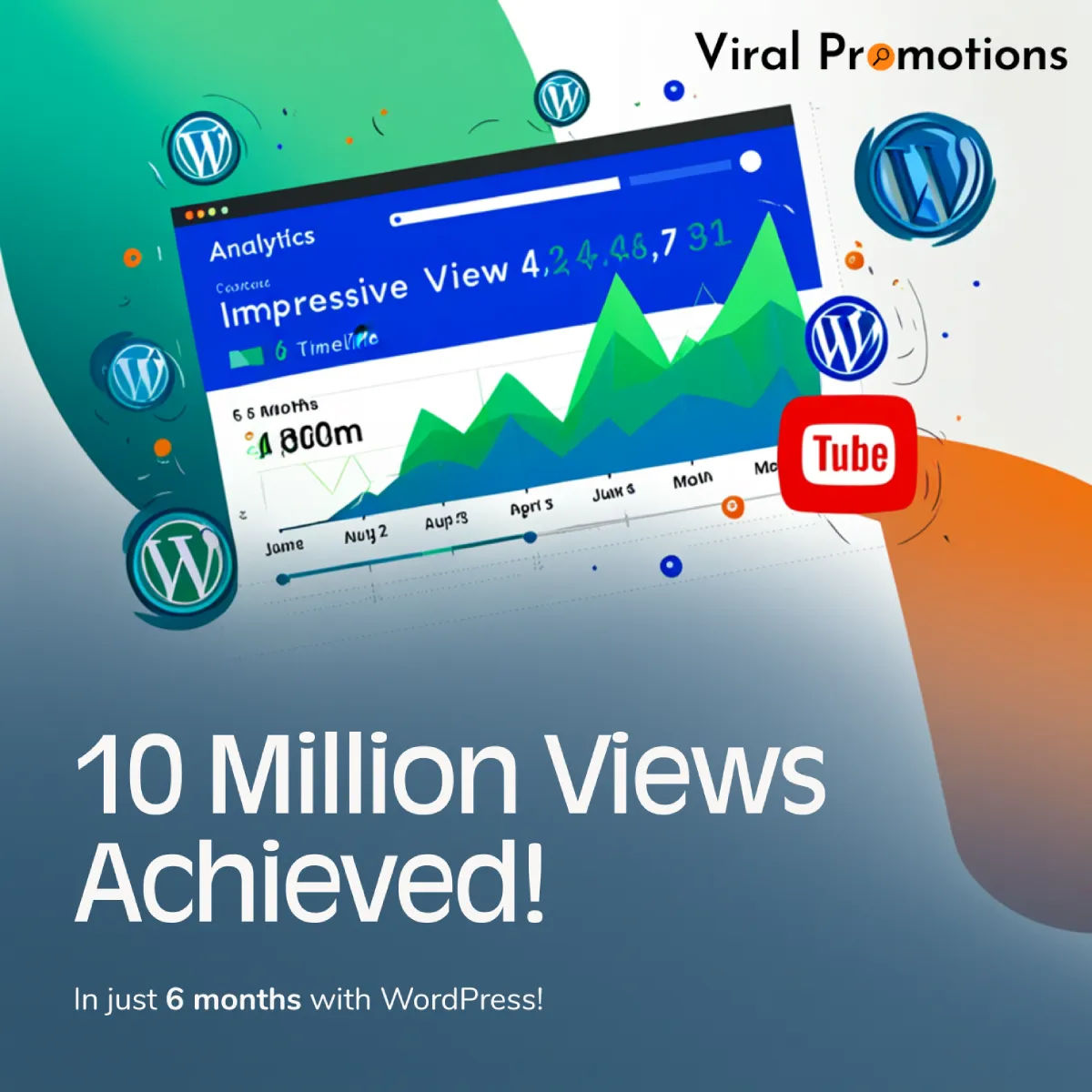Content Automation Case Study: WordPress CMS + YouTube Shorts Strategy Generated 10M Views in 6 Months
An agile team integrated WordPress CMS with YouTube Shorts, amassing more than 10 million views in only six months.
The race for attention online keeps speeding up. Short-form video is more than practical—it drives trends and defines how audiences find content. But with so much content, creators and publishers have to do more with less. This analysis walks through a six-month case where one team used smart automation, WordPress, and YouTube Shorts to hit 10 million views. We’ll break down the key moves, data-driven choices, and clever scheduling that made it possible.
How Integrating WordPress with YouTube Shorts Made Publishing Smarter?
For this team, the main challenge wasn’t making videos—it was publishing them, everywhere, fast. WordPress already helped manage a sprawling library of written guides and articles. Adding video sounded like more work. But the team found a way to link their WordPress site with their YouTube Shorts channel. That meant every time they uploaded a short, they could instantly embed it in related blog posts and news stories.
Automated plugins took over:
- Each fresh YouTube Short appeared in a matching WordPress article.
- Metadata from the video (title, tags, descriptions) synced right to the site.
- No duplicating effort—one upload got the content both places.
Why did this matter? Timely publishing helped catch trending topics and search demand. Visitors from both channels were kept up to date, strengthening SEO performance while sustaining engagement across platforms.
Identifying High-Performing Topics Through Automated Analytics
The heart of any viral video or viewed article is the topic. But guessing isn’t enough. The team leaned heavily on tools that tracked:
- Traffic spikes from search to their website.
- Which Shorts matched news events or rising search terms.
- Keywords climbing fast on YouTube and Google.
Connecting WordPress metrics with YouTube analytics enabled side-by-side comparisons of topic performance, guiding decisions on which subjects to prioritize next.
Mini How-To: Picking Winning Topics with Data
- Scan Google Search Console and YouTube Analytics for rising keywords in your space.
- Match those trends to day-to-day headlines or seasonal themes.
- Mark which topics lead to longer watch times or more site visits.
- Use automation tools to flag and log new trends daily.
This feedback loop turned topic selection from guesswork into a recurring process. Every week, the team knew what worked—and what to drop.
Scheduling and Cross-Posting: Maximizing Reach with Minimal Manual Work
After fine-tuning their content topics, the team faced a complex challenge: scheduling. Since video and article audiences peak at distinct times, releasing both together could either maximize exposure or fall flat.
Their scheduling approach included:
- Planning weeks in advance with WordPress editorial calendars.
- Timing YouTube Shorts releases to match afternoon audience surges in their target markets.
- Embedding Shorts into posts that updated live alongside news cycles or relevant blog pieces.
- Setting up social plugins for hands-free sharing of fresh content on key social platforms including Facebook, X, and Instagram Stories.
The impact:
With less manual updating and smarter automation, the team dropped content more regularly—and had more Shorts line up with what was trending. By consistently [creating short videos] around trending topics, they ensured every release had a higher chance of visibility.
Viewer Engagement Patterns and Lessons from 10 Million Views
Not every Short was a smash. But after hitting 10 million total views, some patterns emerged.
Viewers loved:
- Breaking news distilled into 30-second explainers.
- Fast, animated guides to new products or tech features.
- “Did you know?” facts tied to trending search questions.
Less popular:
- Overly general Shorts without a hook.
- Videos recycled without fresh commentary.
- Off-topic posts that didn’t match the blog audience.
On the site, readers clicked Shorts that filled gaps left by articles—mainly visual step-by-step guides and commentary. This crossover boosted both channels—longer site visits and extra views and shares for Shorts beyond YouTube.
Key lesson:
Success resulted from automating the pairing of videos and posts, combined with careful manual curation to ensure each connection was purposeful and impactful. Over 50% of YouTube views were from Shorts featured in top blog posts.
Key Takeaways for Small Teams Looking to Scale Content Efficiently
After more than 10 million views, the strategy proved one thing: you don’t need a big team to compete with larger publishers. Smart use of automation, well-chosen plugins, and a focus on what the audience actually wants—these matter most.
Want to scale content the smart way?
- Automate the boring stuff like embedding posts, syncing metadata, and sharing on socials.
- Let your data tell you what your viewers really want.
- Keep all your articles and Shorts on the same calendar so nothing slips.
- Share across channels—but only when it makes sense for both audiences.
- Check in every week and put more energy into what’s working best.
Outside experts like Amandeep Singh’s Viral Promotions helped review the workflow, inspiring fresh automation improvements and expanded Shorts testing. Sometimes, tiny changes—like updated descriptions or hashtag automation—caused big surges in audience reach.
This example shows how smartly blending WordPress with YouTube Shorts, backed by automation and planning, lets small teams scale their reach without the hustle or hype—just effective strategy.
Frequently Asked Questions (FAQs)
- What topics turned into the best-performing YouTube Shorts?
Shorts focused on timely news events, visual explainers, and unique how-tos tied to rising search terms sparked the most views. - Can one person set up this workflow, or does it take a big team?
A small team or even a solo creator can use automation tools to publish cross-platform and track analytics if they invest time in setup. - Is this strategy exclusive to tech content, or is it applicable to other subject areas?
The strategy worked best with fast-moving, visual subjects, but it could adapt to niches like food, sports, or pop culture by following trending topics and optimizing for platform strengths.

Leave a Reply